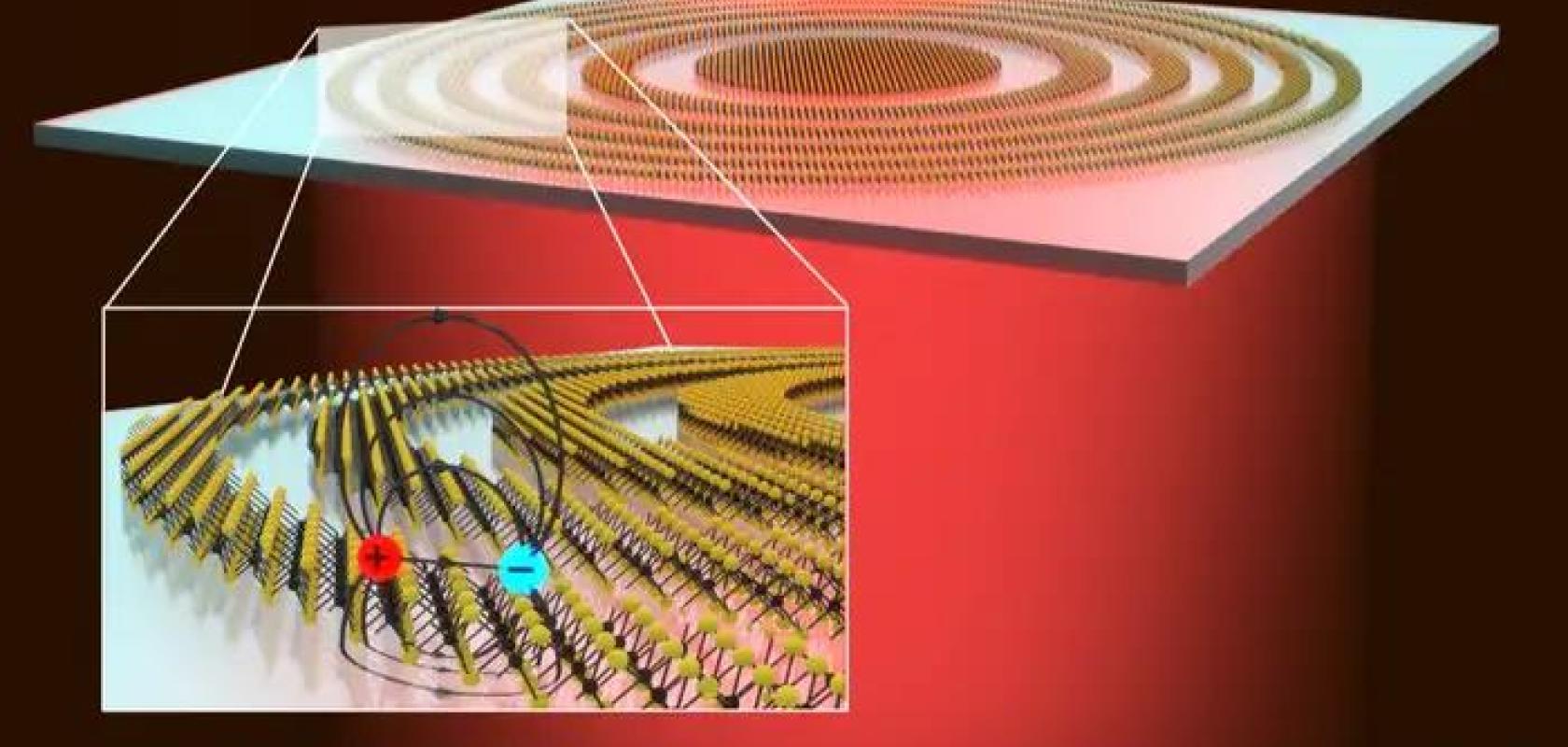A flat lens only half a millimetre wide has been created to rival traditional curved lenses. Using quantum effects to bend and focus light rather than refraction, makes the thinnest lens on Earth perfect for wearable glasses with augmented reality.
Curved lenses have been used for scientific research applications for over 2,000 years, to study objects as far away as distant stars and as close up as tiny microorganisms. These traditional methods of observation use their curved shape to bend and focus light, refracting upon entry and again on exit, allowing the viewer behind the lens to see the object closer than it actually is.
By using diffraction rather than refraction, however, physicists from the Universities of Amsterdam and Stanford have used quantum effects to produce a flat lens only three atoms thick, making it ideal for augmented reality applications.
Using a single layer of tungsten disulphide (WS2), Ludovica Guarneri, Thomas Bauer and Jorik van de Groep build a flat lens just 0.6nm thick. Instead of a curved shape, the solution uses a ‘Fresnel’ or ‘zone plate’ lens of concentric rings of WS2 with gaps in between to focus the light. The lens’ focal length is determined by the distance between these concentric rings – in comparison to the wavelength of the light that hits it.
Having a quantum effect
The quantum effects within the WS2 allows the lens material to efficiently absorb and re-emit light at specific wavelengths, which give the lens the ability to become more efficient. The quantum enhancement works by sending electrons to higher energy levels, allowing WS2 to absorb more light.
The negatively charged electron is kept together with the positively charged gap it leaves behind by electrostatic attraction, and an exciton is formed. Once the electrons and the holes they leave merge back together, however, the excitons quickly disappear and the re-emitted light continues to contribute to the efficiency of the lens.
The scientists detected a peak in lens efficiency when the specific wavelengths of light matched those emitted by the excitons. Meanwhile, because excitons work better at lower temperatures, the effect was shown to be more efficient once the lenses had cooled down.
Augmented reality applications
As the majority of light is able to pass through the flat lens and remain unaffected, “the lens can be used in applications where the view through the lens should not be disturbed, but a small part of the light can be tapped to collect information,” said Jorik van de Groep. “This makes it perfect for wearable glasses such as for augmented reality.”
The researchers are now looking to design and test more complex and multifunctional optical coatings, such as those that can be electronically adjusted to change function. “Excitons are very sensitive to the charge density in the material,” said van de Groep, “and therefore we can change the refractive index of the material by applying a voltage.”


